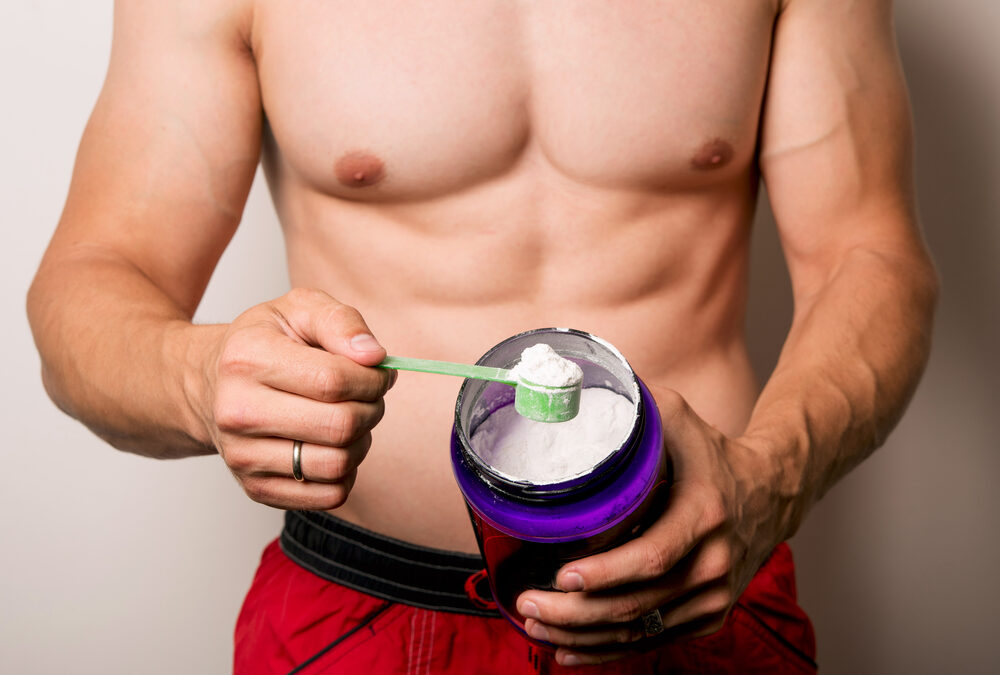What Is Creatine?
Creatine is a naturally produced compound found in the body. It plays different roles in the body including, a high role in energy production through ATP-CP (adenosine triphosphate-creatine phosphate), which provides a rapid energy in low-duration, high-intensity movements. Additionally creatine also plays a role in muscle mass, recovery, and some studies show that creatine can potentially help protect against neurodegenerative disease.
How Do You Ingest Creatine?
Creatine is naturally present in red meats and fish, and the body produces approximately 1 gram per day through the kidneys, pancreas, and liver. This article focuses on monohydrate creatine, the most extensively researched form of creatine. While other forms of creatine are marketed as “cleaner” or more effective, monohydrate remains the predominant choice in scientific studies.
Creatine supplementation is straightforward; it is a tasteless powder that mixes easily into smoothies or juices. A daily dose of 5 grams is typically recommended. For certain populations or specific training goals, a “loading phase” involving 20-25 grams per day for 7-10 days may be beneficial. However, a loading phase is generally unnecessary unless preparing for an event in a short timeframe. If you opt for a loading phase, it is advisable to divide the total dosage into 5-gram increments taken throughout the day to minimize gastrointestinal discomfort. For long-term use or general purposes, a consistent daily intake of 5 grams is usually sufficient without the need for a loading phase.
Fact: Creatine is an Energy Source
Creatine is involved in making energy for the muscle, and about 95% of it is found in the skeletal muscle. Phosphocreatine is a molecule that is very essential for energy production. Phosphocreatine plays a large role in ATP-CP (adenosine triphosphate-creatine phosphate) which is essential for low-repetition, highly-explosive movements. As the body needs energy the phosphate is donated to ADP (adenosine di-phosphate) to build ATP (adenosine tri-phosphate), which is used for energy use and storage on the molecular level.
This addition of energy is particularly beneficial in strength and power training, potentially allowing one to perform slightly more repetitions compared to not taking creatine, due to the higher volume of ATP-CP. Hence why it is such a popular supplement in the fitness community as extra repetitions equal a higher total load moved, which will increase gains and hypertrophy.
Myth: Creatine is an Anabolic Steroid
To debunk this myth, it’s important to understand what an anabolic steroid is. Anabolic steroids are synthetic variations of the male sex hormone testosterone. While they are most commonly injected, they can also be taken orally or from a gel. Medically, anabolic steroids are used to treat conditions like decreased testosterone levels in the elderly, or atrophy from a disease such as cancer. However, they are most commonly used by bodybuilders to enhance muscle mass and strength for performance and aesthetic reasons.
You might wonder how an injection of this steroid increases muscle hypertrophy and strength. Simply put, testosterone increases muscle mass by binding to androgen receptors and, through a series of steps, result in the transcription of genes that increase muscle size. On the other hand, creatine enhances the energy system, allowing for more explosive repetitions that, over time, lead to increased power and muscle mass. Creatine does not add muscle size nearly as quickly as anabolic steroids do, but it is a much safer and smarter approach.
Truth: Creatine is Beneficial for the Elderly Population
Truth AND Myth: Creatine Will Have No Side Effects
The use of creatine supplementation is a highly debated topic in the supplement industry. However, most research concludes that there are minimal or no side effects if it is taken correctly. While some individuals report side effects such as bloating, dehydration, and kidney damage, these are typically associated with excessive intake over a short period.
When someone begins taking creatine, an initial increase in water retention is common. This effect is more pronounced during a loading phase, where higher doses of creatine are consumed to quickly saturate muscle stores. During this phase, individuals are more likely to experience side effects like bloating and dehydration. It is crucial to increase water intake during this time to maintain proper hydration levels and balance body fluids.
For those who start creatine supplementation without a loading phase, the likelihood of experiencing these side effects is significantly lower. The gradual introduction allows the body to adjust without the abrupt changes in water retention.
The concern about kidney damage is a common misconception. This comprehensive meta-analysis of over 290 studies has concluded that creatine supplementation does not negatively impact renal function. This finding reinforces the safety of creatine when used as recommended.
Overall, while there are potential side effects, they are generally mild and manageable with proper dosing and hydration. Creatine remains a widely supported and effective supplement for enhancing athletic performance and muscle growth.

